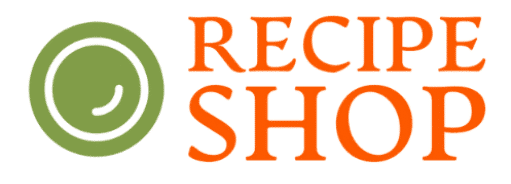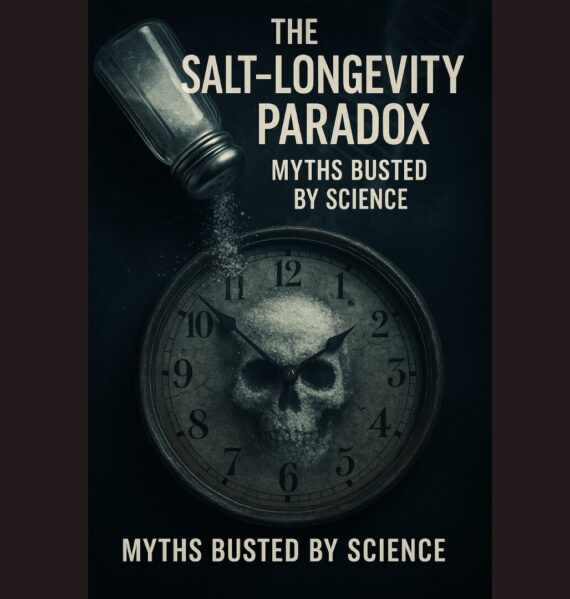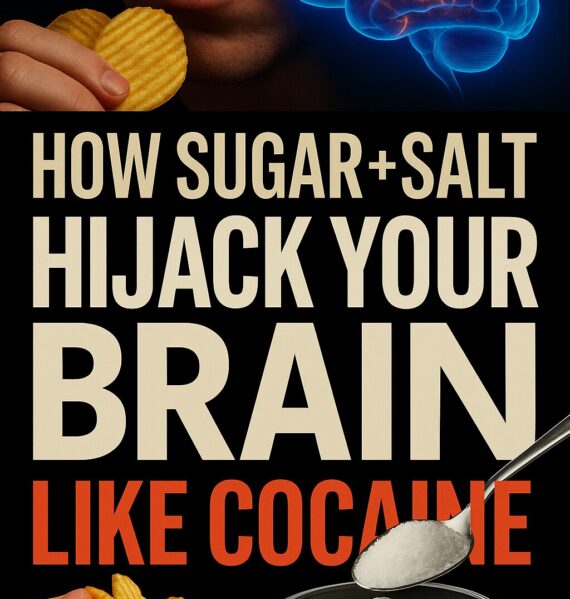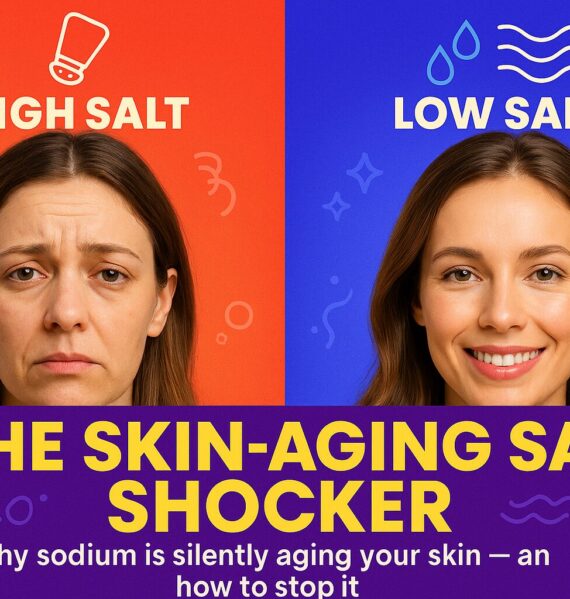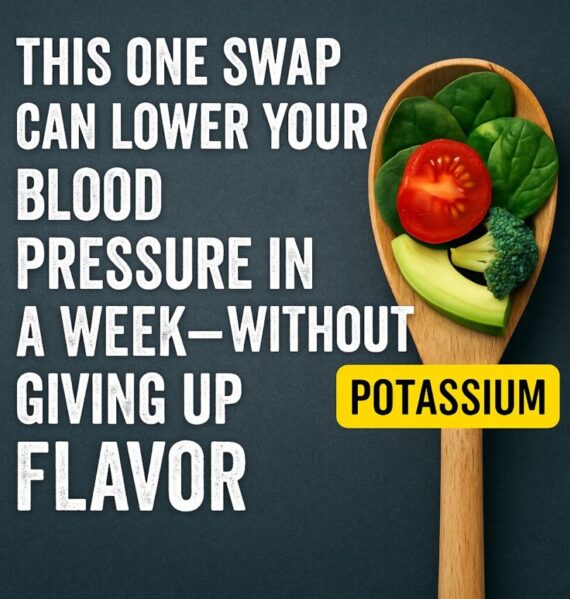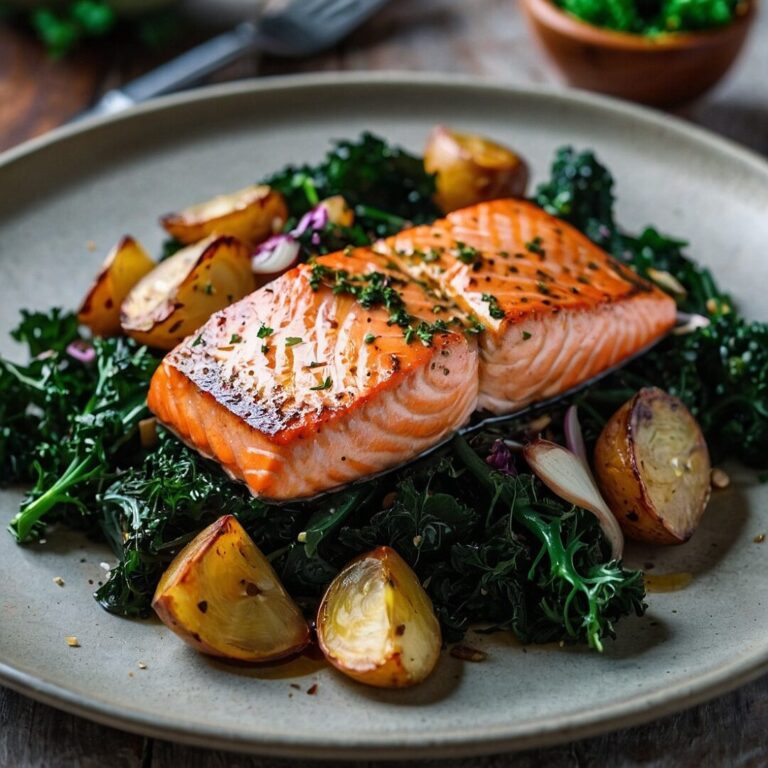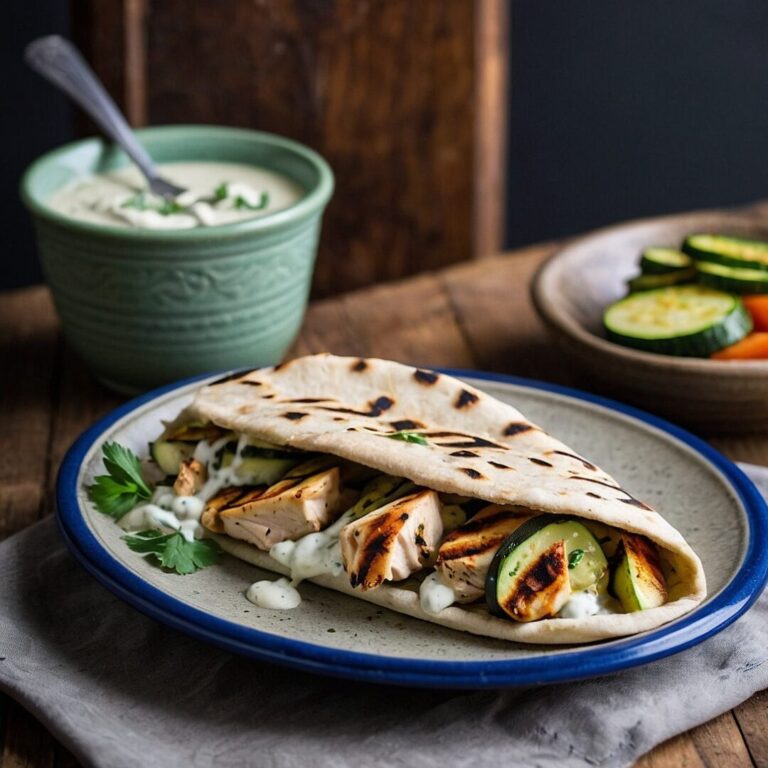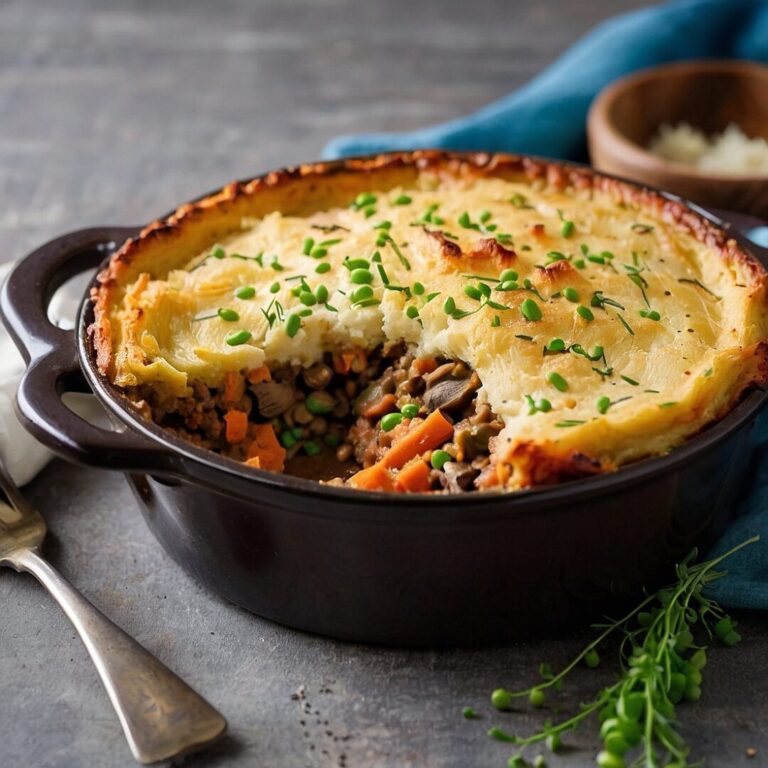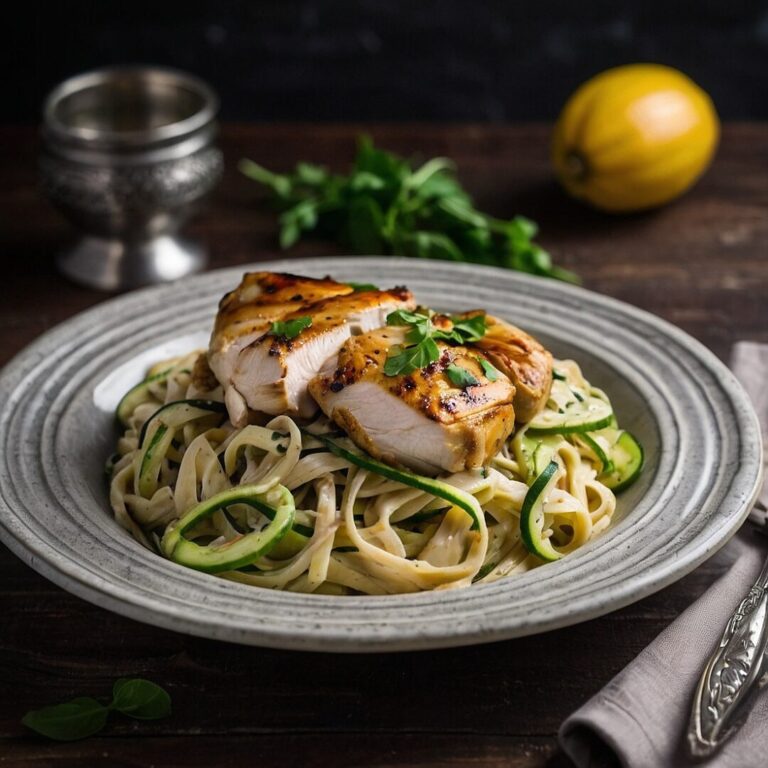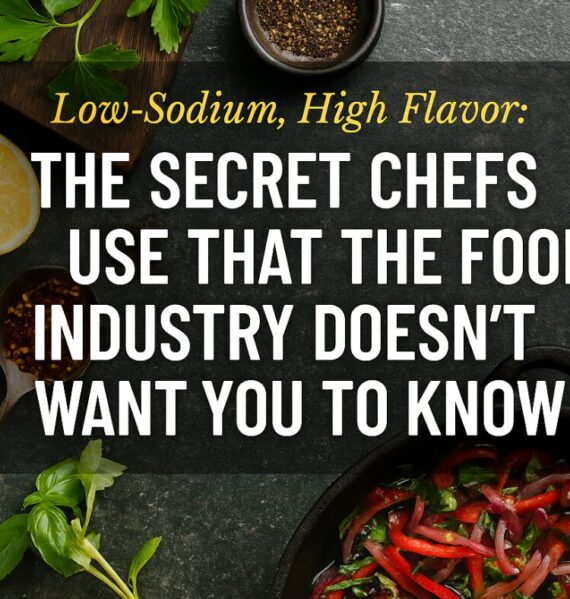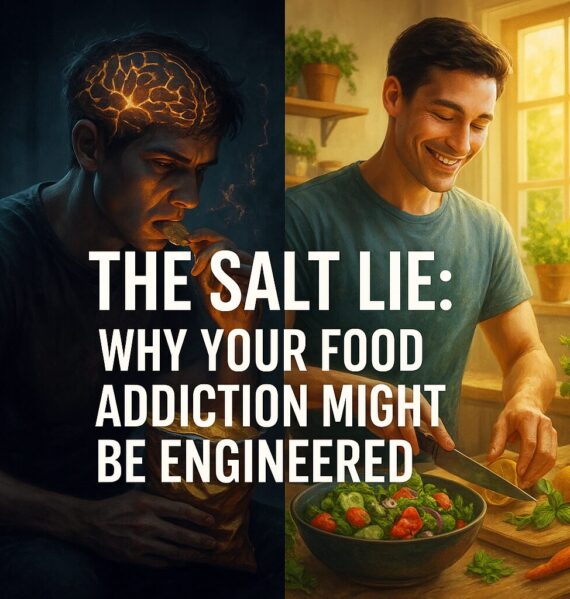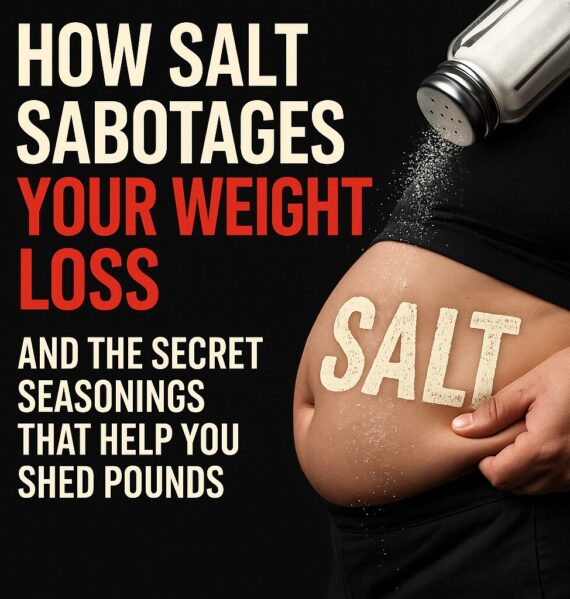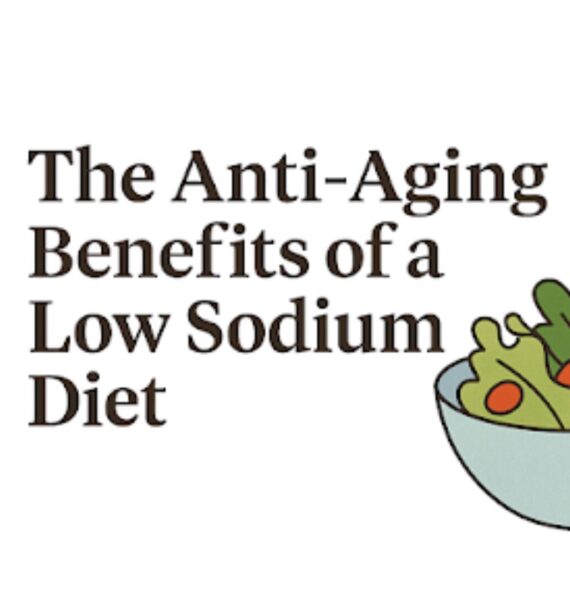The Salt–Longevity Paradox: Myths Busted by Science
Why Everything You Think You Know About Salt, Health & Aging Might Be Killing You
By Lisa Davies, Certified Nutritionist & Founder of Recipe Shop
The Modern Longevity Lie
We live in the age of information, wellness influencers, and biohacking—but we’re still getting salt dead wrong. At the very same time that longevity research is booming, a quiet epidemic is shortening lives, increasing disability, and accelerating aging in plain sight.
And it’s not sugar.
It’s not alcohol.
It’s not fat.
It’s sodium—hiding in “healthy” food, gaslighting your body, and aging you at the cellular level.
The idea that salt is only dangerous for people with high blood pressure is an outdated, dangerous myth. It’s time to dismantle the “Salt–Longevity Paradox” once and for all.
Part I: The Hidden Sodium Crisis No One Talks About
Most Americans consume 3–4 times the recommended daily sodium limit—often before dinner.
Yet, 75% of sodium doesn’t come from the salt shaker. It comes from “healthy-looking” processed foods:
- Turkey breast labeled “natural”
- Protein bars
- Veggie burgers
- Multigrain wraps
- “Low-fat” soups
Even organic, clean-eating meal kits can pack over 3,000 mg of sodium—daily. That’s enough to:
✅ Spike your blood pressure overnight
✅ Dehydrate your brain cells
✅ Weaken your arterial lining
✅ Impair insulin sensitivity
✅ Disrupt sleep hormones
✅ Break down collagen
The truth is: sodium doesn’t just affect your heart—it affects your entire lifespan.
Part II: What the Science Really Says About Salt and Aging
Let’s break it down by system.
1. 🧠 Salt Shrinks the Brain
A landmark study in Nature Neuroscience found that excess dietary sodium triggers a cascade of immune responses in the brain, reducing blood flow and causing cognitive deficits—without affecting blood pressure at all.
Translation? Even if your BP looks normal, your brain may already be aging faster if your sodium is too high.
Another 2020 study from the American Heart Association revealed that high sodium diets reduce the size of the hippocampus—the part of the brain responsible for memory. This may be one reason behind the skyrocketing rates of early-onset dementia.
🧠 Salt-induced brain fog is real—and it’s reversible.
2. ❤️ Salt Ages Your Arteries
High sodium stiffens blood vessels. Over time, this causes the walls of your arteries to lose elasticity, increasing your risk of stroke, vascular dementia, and kidney disease—even if you “feel fine.”
One study in The Journal of Hypertension tracked nearly 4,000 healthy adults. Those who consumed the most sodium had twice the arterial stiffness, a key marker of biological aging.
The kicker? These changes can start in your 30s.
3. 🧬 Salt Accelerates Cellular Aging
Excess sodium intake triggers oxidative stress and low-grade inflammation—a combo that damages mitochondria, your cells’ energy producers.
It also contributes to telomere shortening, a known biomarker of accelerated aging and disease risk. The shorter your telomeres, the higher your risk of:
- Alzheimer’s
- Cardiovascular disease
- Type 2 diabetes
- Certain cancers
In a massive study published in The European Journal of Nutrition, high sodium intake correlated with shorter telomeres, especially when paired with low potassium—a perfect storm in the modern diet.
Part III: The Longevity “Blue Zones” Eat Low-Sodium—Here’s Proof
Let’s talk about the real anti-aging diets of the world.
The five “Blue Zones”—areas with the highest percentages of centenarians—include Okinawa, Ikaria, Sardinia, Nicoya, and Loma Linda. Across all of them:
- Meals are homemade
- Sodium is minimal and mostly naturally occurring
- Salt is used as a finishing flavor, not a food preservative
- Processed food is virtually absent
Average sodium intake in these zones?
1,200–1,800 mg/day.
That’s less than HALF the U.S. average.
🔥 In the Blue Zones, salt is a seasoning. In America, it’s an addiction.
Part IV: 5 Myths About Salt That Are Aging You Faster
Let’s bust them:
❌ Myth #1: “I don’t salt my food, so I’m fine.”
✅ Reality: Up to 90% of sodium comes from packaged foods, sauces, dressings, and restaurant meals.
❌ Myth #2: “You need more salt if you’re low-carb.”
✅ Reality: While low-carb diets affect sodium regulation, most people overcorrect and overload sodium without balancing potassium or magnesium.
❌ Myth #3: “Low sodium is dangerous for athletes.”
✅ Reality: True sodium deficiency is rare and usually due to excessive fluid intake, not low dietary salt.
❌ Myth #4: “Sea salt and pink salt are healthier.”
✅ Reality: These may contain trace minerals, but they’re still sodium chloride. The body treats them the same.
❌ Myth #5: “Low sodium = bland food.”
✅ Reality: When your taste buds recalibrate (which takes ~3 weeks), herbs, spices, citrus, garlic, and umami-rich ingredients become your new flavor toolkit.
Part V: What Happens When You Cut Salt (The First 7 Days)
The change is visceral:
- 💧 You shed 3–7 pounds of water weight
- 🧠 Brain fog clears like lifting a wet towel
- ⛓️ Cravings ease — taste buds reset
- ❤️ BP starts dropping within 48 hours
- 💤 Sleep becomes deeper, more restful
- 🪞 Facial puffiness and under-eye bags fade
- 🧬 Energy returns at the mitochondrial level
And yes, even your skin looks better. (Collagen breakdown slows, puffiness reduces, and cell hydration improves.)
Part VI: The Salt–Longevity Equation You Actually Need
Here’s the new formula:
- Sodium: Keep under 1,500 mg/day (most days)
- Potassium: Increase to 3,500–4,700 mg/day (leafy greens, beans, squash, avocado, sweet potato)
- Hydration: At least ½ body weight in oz water
- Magnesium: 300–400 mg/day from food or supplement
- Whole Food Meals: Made at home or from low-sodium meal plans like those on Recipe Shop
This nutrient triad (low sodium, high potassium, balanced hydration) is your anti-aging shield.
Final Word: You Don’t Need to Fear Salt—You Need to Respect It
Salt isn’t evil.
But the way we consume it is.
If you care about your health span (not just your lifespan), sodium has to move from the sidelines to the front of the conversation.
No amount of collagen powder, matcha, or morning meditation will undo a 3,400 mg/day sodium habit. Not when it’s unraveling your brain, arteries, skin, metabolism, and mitochondria from the inside out.
📦 Download the 7-Day Low-Sodium Reset Plan
Want to feel the difference in 7 days or less?
Get the exact plan we give our clients (and our families):
[Download the Free 7-Day Reset]
→ Includes 14 low-sodium recipes (500mg sodium max per meal)
→ Grocery list + delivery links
→ Quick meals: 30 minutes or less
→ Proven results in energy, clarity, sleep & cravings
🔁 Share This Paper
If you care about aging well, share this with someone you care about.
Tag: #SaltMyths #LongevityReset #RecipeShop
